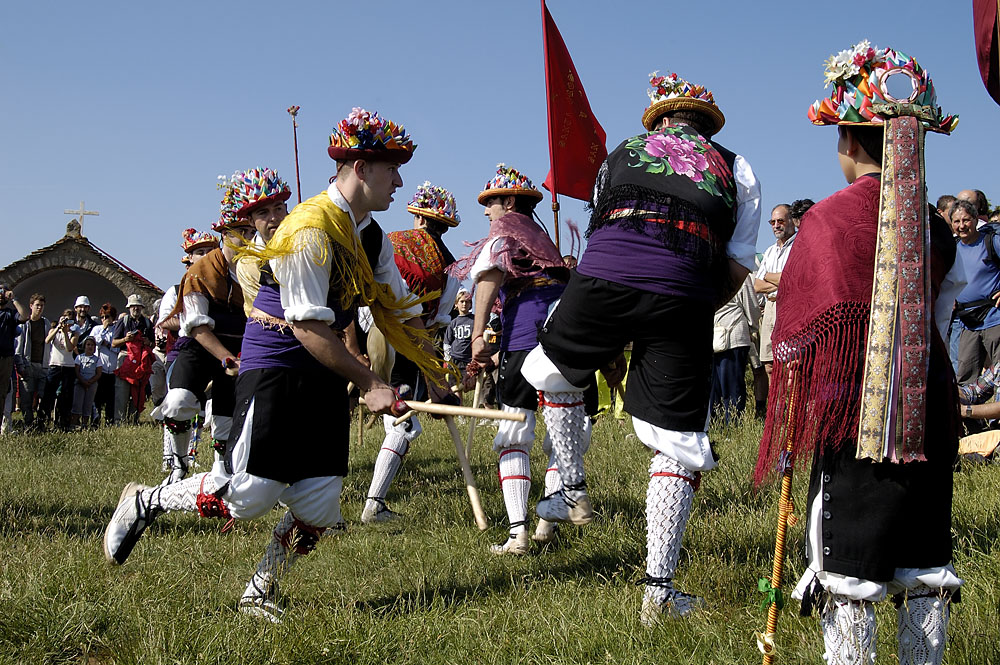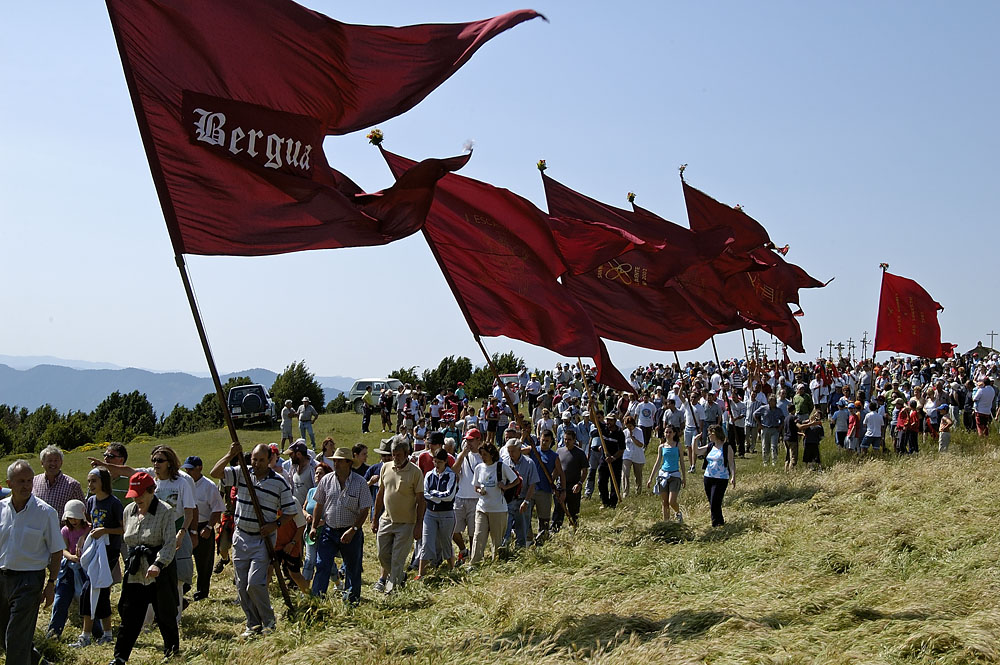Dance is one of the oldest forms of Pyrenean folklore. Some of the local traditional dances are thought to be a representation of the fight between good and evil. Others are a dialogue between the head shepherd and his subordinate.
It is not known when they originated; perhaps the first dances developed from representations of sword fights or farm tasks using sticks. We know that some lyrics can be attributed to the 17th Century and may originate from pastoradas, a performance with songs praising the relevant patron saint and funny stories about what happened after the last festival in the area. In Yebra and Panticosa pastoradas are in the Aragonese language.
The musicians play two unusual instruments: the tabor pipe (chiflo), which is a three-holed wind instrument that is sometimes covered in snake skin; and the psaltery (salterio), a sound box with strings that is played by hitting it with a stick. They wear a waistcoat and short trousers, as well as a coloured hat with flowers.
The sticks used in the dances are boxwood. However, in Alto Gállego sticks of snowy mespilus (serenain Aragonese) are nearly as common. The snowy mespilus is a bush with white flowers, which produces edible berries and grows all over the Region.
YEBRA DE BASA DANCERS
They accompany the procession on 25th June to the Shrine of Saint Orosia which goes from Yebra to the slopes of the Oturia Mountain.
It is one of the most important forms of intangible heritage throughout the whole Pyrenees. Seeing how the dancers move, the procession, the atmosphere that is a mix of festive and religious, you become immersed in a space that has a certain timelessness, as if you had travelled back in time.
It is an example of popular Aragonese theatre that, according to records, has been taking place in Yebra de Basa since at least 1814.
YÉSERO DANCES
This village is not far from the Cotefablo Pass in the direction of the Ordesa Valley as you come from Biescas.
There is a special dance, called mudanzas, for the procession to Our Lady of the Snows, which takes place on the weekend closest to 6th August and the Nativity of the Virgin Mary, which is the weekend of 8th September.
In recent years a Stick Dancers gathering has been organised in the village where dancers from other towns that carry on the tradition are invited. In Yésero the dance is called T’empego.
LANUZA STICK DANCES
This tradition, the dance, the stick-bearers, in fact the whole village been revived. This is because in 1961 expropriation began of the land that the village was on in order to build a dam. In 1978 the last inhabitants left and the village was deserted.
Twenty years later and after a lot of hard work and red tape, the Residents’ Association started the recovery process. The village has residents again and so the paloteau (stick dance) is performed once more on the last weekend of August, the festival to Saint Quiteria.
PANTICOSA PASTORADA
After more than 250 years since it disappeared Panticosa has revived its Pastorada de San Roque. The performance happens in the middle of August, at the same time as the feast of Saint Roch and as part of the fiesta in honour of the village’s patron saint. The performance takes place in the main square and consists of a head shepherd and a junior shepherd, and a troop of dancers. The performers recite special verses to the saint. Traditionally the head shepherd spoke in elegant Spanish while his colleague spoke in the Panticosa dialect of Aragonese. The former recounts the history and life of the saint through these poems and folks songs, finishing up with a stick dance by the Panticosa Dancers and the farewell by the young shepherd.

